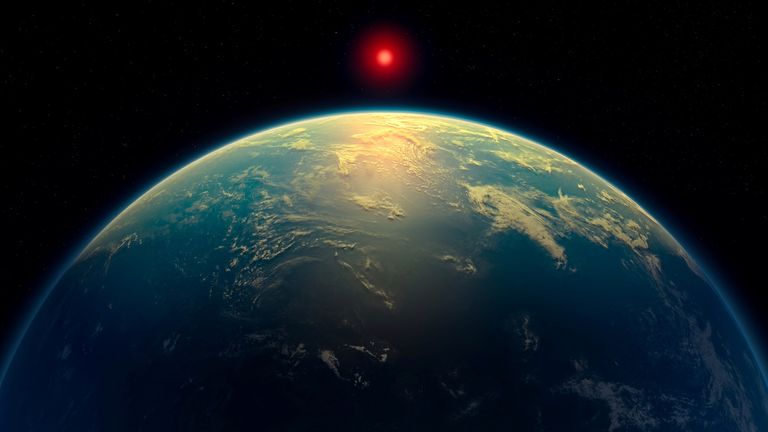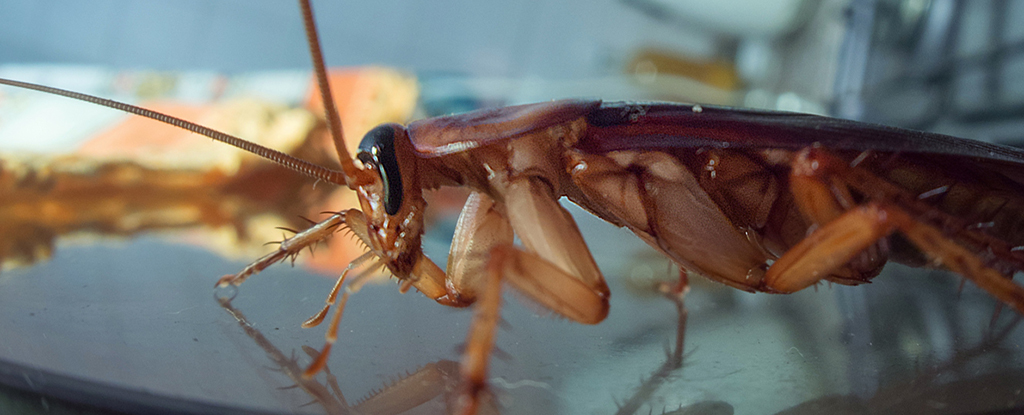Alien World Breakthrough: Strongest Hints of Extraterrestrial Life Detected Beyond Our Solar System
Science
2025-04-16 23:45:00Content

In a groundbreaking discovery, astronomers using the James Webb Space Telescope have detected tantalizing signs of potential life on K2-18 b, an exoplanet located beyond our solar system. This remarkable finding marks a significant milestone in humanity's quest to understand whether life exists elsewhere in the universe.
The distant planet, situated in the habitable zone of its star, has captured scientists' imagination with compelling evidence that suggests the presence of carbon-based molecules typically associated with biological processes. Researchers carefully analyzed spectral data from the advanced telescope, revealing complex chemical signatures that hint at the possibility of life-supporting conditions.
K2-18 b, a planet classified as a "super-Earth," orbits a cool dwarf star and presents an intriguing environment that could potentially harbor the fundamental building blocks necessary for life. While these initial findings are not definitive proof of extraterrestrial life, they represent an exciting step forward in our understanding of planetary ecosystems beyond our cosmic neighborhood.
The scientific community is buzzing with anticipation, recognizing that this discovery opens new pathways for exploring the potential for life in the vast, mysterious expanses of our galaxy. Further research and more detailed observations will be crucial in unraveling the mysteries surrounding this fascinating exoplanet.
Cosmic Breakthrough: Potential Alien Life Detected on Distant Exoplanet K2-18 b
In a groundbreaking scientific revelation that promises to reshape our understanding of extraterrestrial existence, astronomers have leveraged the unprecedented capabilities of the James Webb Space Telescope to uncover tantalizing evidence of potential biological signatures on a distant exoplanet, marking a pivotal moment in humanity's quest to understand our cosmic neighborhood.Unveiling the Extraordinary: A Glimpse into Alien Worlds Beyond Our Imagination
The James Webb Space Telescope: A Window to Cosmic Mysteries
The James Webb Space Telescope represents humanity's most sophisticated astronomical instrument, a marvel of engineering that has transformed our ability to peer deep into the universe's most enigmatic regions. Unlike traditional telescopes, this technological wonder employs advanced infrared imaging capabilities that allow scientists to penetrate cosmic dust clouds and analyze planetary atmospheres with unprecedented precision. Its sophisticated array of mirrors and sensors can detect minute chemical signatures that might indicate the presence of life-supporting conditions, making it an invaluable tool in humanity's ongoing search for extraterrestrial existence. Researchers have meticulously calibrated the telescope's instruments to scan distant planetary systems, focusing on exoplanets residing within the "habitable zone" - a cosmic sweet spot where temperatures could potentially support liquid water and other essential biological processes. The telescope's ability to perform spectroscopic analysis enables scientists to decode the chemical composition of planetary atmospheres, revealing intricate details about potential habitability.K2-18 b: A Promising Cosmic Candidate
Located approximately 124 light-years from Earth, K2-18 b emerges as a particularly intriguing celestial body. This exoplanet, classified as a "super-Earth," orbits within the habitable zone of its host star, presenting conditions that could potentially support complex molecular interactions. The planet's size and orbital characteristics suggest it might possess a substantial atmosphere, a critical factor in assessing its potential for harboring life. Preliminary spectroscopic data collected by the James Webb Space Telescope revealed the presence of carbon-based molecules and water vapor in K2-18 b's atmospheric composition. These findings are particularly exciting because they mirror chemical signatures associated with biological processes on Earth, suggesting the possibility of similar life-supporting mechanisms existing on this distant world.Decoding Atmospheric Signatures: The Scientific Investigation
The scientific team's investigation involved complex computational modeling and rigorous data analysis. By comparing the detected molecular signatures with known biological markers, researchers developed sophisticated algorithms to assess the probability of life-supporting conditions. The presence of methane and carbon dioxide, alongside water vapor, creates an intriguing chemical environment that mirrors some fundamental characteristics of Earth's early atmospheric conditions. However, scientists remain cautiously optimistic, emphasizing that while these findings are groundbreaking, they represent potential indicators rather than definitive proof of extraterrestrial life. The research community continues to advocate for additional observations and more comprehensive studies to validate these preliminary discoveries.Implications for Humanity's Understanding of Cosmic Life
The discovery of potential life-supporting conditions on K2-18 b transcends mere scientific curiosity. It challenges our fundamental understanding of biological processes and suggests that life might be more adaptable and widespread than previously imagined. This revelation opens unprecedented avenues for exploring the diversity of potential life forms and understanding the complex mechanisms that could support biological existence beyond our planet. The James Webb Space Telescope's capabilities have effectively transformed our perspective, demonstrating that the universe might be teeming with possibilities we are only beginning to comprehend. As technology continues to advance, humanity stands on the brink of potentially the most significant scientific discovery in our species' history - the confirmation of life beyond Earth.RELATED NEWS
Science

Robo-Roaches: How Scientists Hacked Insects to Create Living GPS Navigators
2025-03-12 03:21:36
Science

Surfing Gratitude: Medical Students Pay Tribute to Anatomy Donors in Emotional Paddle Out Ceremony
2025-04-28 15:56:42
Science

Economists Sound Alarm: Trump's Science Agenda Could Derail Future Innovation
2025-03-31 15:35:08





